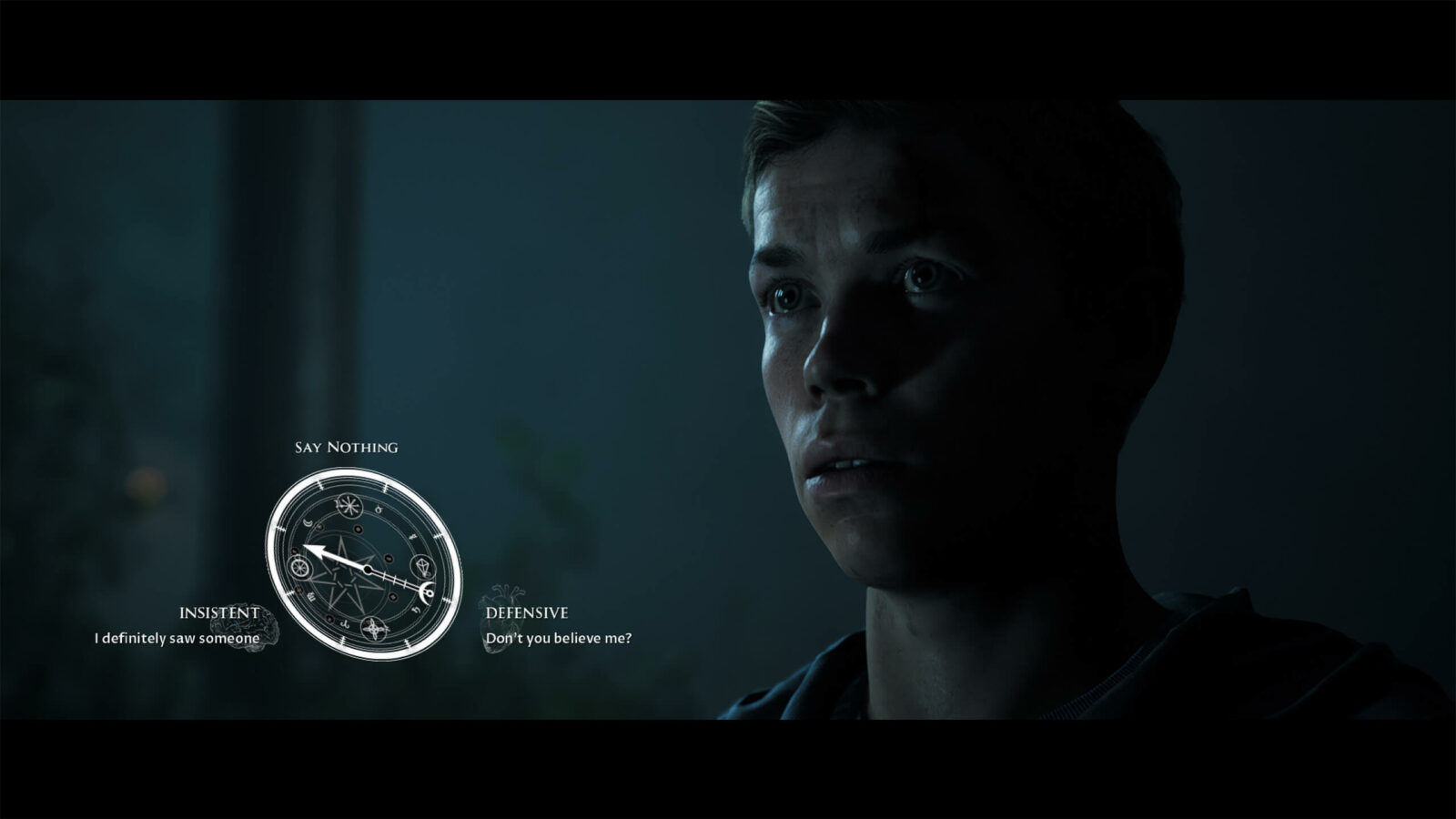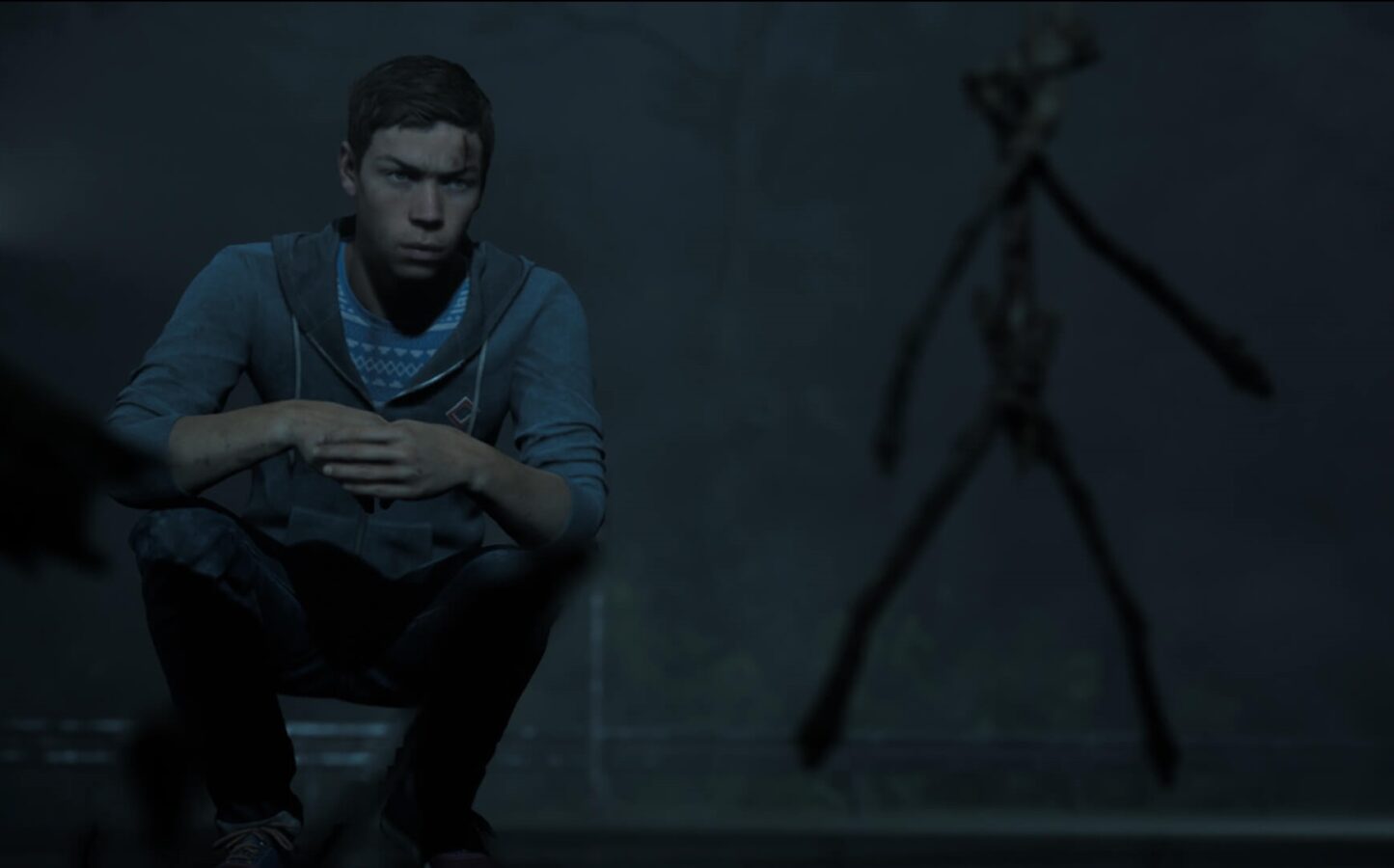“Will the sequel live up to or top the first entry?” That was the burning question with Supermassive Games’ second entry in their horror anthology series, The Dark Pictures Anthology: Little Hope. The witchy supernatural mystery was teased at the end of the first game, The Dark Pictures Anthology: Man of Medan, and after its enjoyable run, the sequel had some expectations to conquer. While the setting ventured away from the high seas, this sequel delivered an eerie and spinetingling atmosphere set in the foggy town of Silent Hill … ahem, I mean Little Hope. However, compared to its predecessors (Man of Meden and Until Dawn), Little Hope achieved its goal of a twisty mystery, but it didn’t stick the landing.
Little Hope is a story told in three generations: the puritanical past, the 70s, and the present. The main story focuses on a group of university students and their professor getting lost in the abandoned town of Little Hope after their bus crashes. Andrew, Taylor, Angela, John, and Daniel can’t escape the foggy barriers of the town; they must push forward and experience the creatures/ghosts that stalk them at every turn. Similar to previous games, each character has a distinct personality and backstory to them that motivates their direction. This aspect is one of the strongest positives of the game as you get a clear sense of the characters and witness how they change with each new decision. (Although, Andrew definitely falls victim to the Vanilla Protagonist trope.)
Also returning for Little Hope is the Butterfly Effect system that impacts the narrative of the story. The game has plenty of hidden photos, discoverable items/paths, character traits, and quick-time decisions that shape the progression of the game. Each playthrough is never 100% the same; unless you’re hitting beat for beat, the dialogue and scenes can alter based on changing one simple decision. Players get the power of choosing an option that is either their head, their heart, or no answer – these simple choices play a big part in how the characters grow. This mechanic helps with replayability to learn something new about the game and to uncover new pieces that will add more to the story (as well as any achievements you’re trying to claim).

Plus, the premonition items returned as well! These discoverable photos (previously picture frames) shed light on either a good event or a bad event that could happen to the player later in the game. Heed these photo warnings as they do provide helpful information about potential death scenes or clues about learning the big mystery. The difference this time around? The photos are designed after witchy and witch trial scenes – nothing else has changed about this feature.
Overall, the core features that were launched in Man of Medan returned for Little Hope too. Players can play the solo game by themselves, or they can play multiplayer with friends online or locally. “Shared Story” allows two friends to play together online and “Movie Night” allows up to five players to pass the controller amongst themselves to play a game at home. And, there are extra behind-the-scenes videos that get unlocked as more items are discovered throughout the story. The negative here is that nothing new is added to the table – the same framework is carried over. (I wouldn’t be surprised if the same happens for the third game in the series, The Dark Pictures Anthology: House of Ashes.)
Periodically through the story, the characters are faced with the appearances of their doppelgangers. These similar characters (both from the puritanical witch trials and the 70s) play a significant part in how the story unfolds for the present-day victims in Little Hope. Sometimes the forewarning will help a character to escape while other times it can lead to their death. This interconnecting web added a positive touch to the story as it heightened the stakes for not wanting history to repeat itself; this strength is only at its strongest during the first playthrough, so try not to get spoiled on the story if you can.
And the decision to play off of the witch trials as Little Hope’s main theme was a strong connecting thread. As the events of the past start to escalate and the paranoia of the puritans grows deadlier, the same sense of dread and threat level seeps its way into the present. Little Hope benefits from its stronger narrative to make the story have a deeper emotional weight to it. Plus, the abandoned town is essentially a monument to the witch trials that came before it – everything is wrapped up together into a witchy bow.

One of the slight negatives of Little Hope is that it borrows more elements than it should from the Silent Hill series. Is the trope of an abandoned foggy town exclusive to Silent Hill? No. Is Silent Hill the only series that can discuss the conflicting inner pain of their characters? No. Can only one narrative benefit from a cult-like mentality of its township? No. Little Hope is playing in their own sandbox with some of these elements to make it their own. However, by putting these pieces together (and some other ones not indicated), Little Hope feels like a lighter version of a Silent Hill game. At times, I was half-expecting to see James Sunderland from Silent Hill 2 come running down the street looking for his wife.
Advertisement
The biggest issue with Little Hope, on the other hand, comes from its ending. Without giving any spoilers away, the ending effectively removes any stakes from the game in favor of a shocking twist. Don’t get me wrong, the moment delivered a jaw-dropping reveal when all was said and done! However, to deliver that ending, it took away the weight of the player’s actions throughout the game and reduced the stakes for future replayability. If only the developers had made a few alterations, the rest of Little Hope’s story would’ve worked – it was great, well-developed, and had a strong connection that tied three layers together. The ending isn’t terrible, but a different decision would’ve changed the tone of the journey for the player. Until Dawn still stands as the game with the biggest stakes.
The Dark Pictures Anthology: Little Hope is a mysterious and thought-provoking horror story that continues the momentum from its predecessor. The game brings back many elements from Man of Medan that you’ll like and it has more well-developed characters to follow through its story. However, nothing new is added to the table for this ghostly mystery, and when all is done, the stakes of feeling like you’ve survived a horror movie depends on the player. Little Hope has many good positives, but its polarizing ending will either leave you on a thoughtful note or a frustrating surprise.
Developer: Supermassive Games
Publisher: Bandai Namco Entertainment
Platform: PC, PlayStation 4, and Xbox One
Release Date: October 30th, 2020
Copy Purchased By Author
Advertisement
Advertisement






